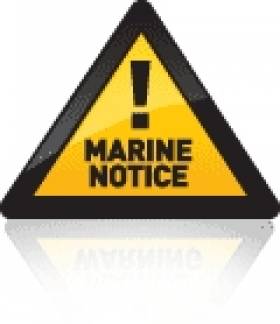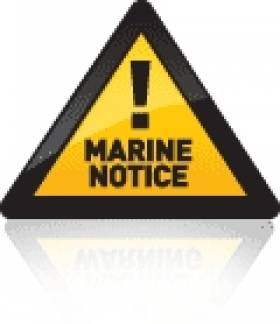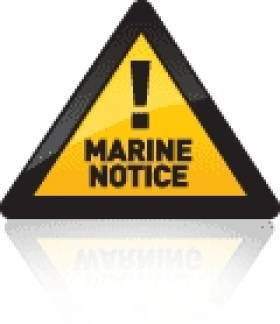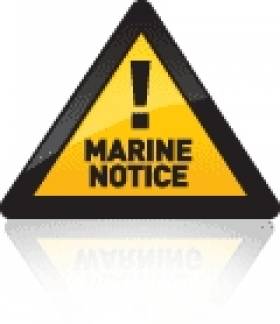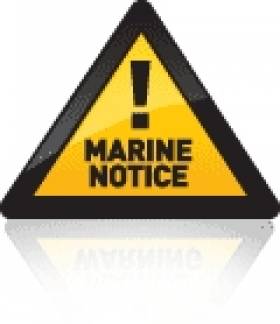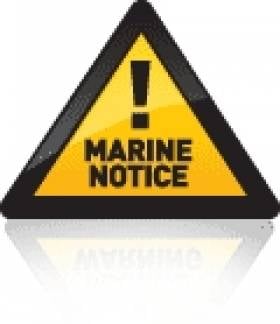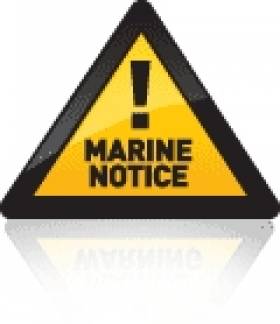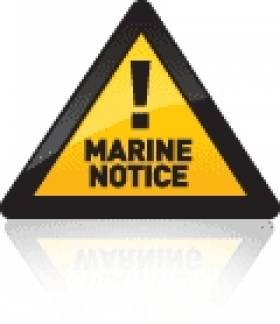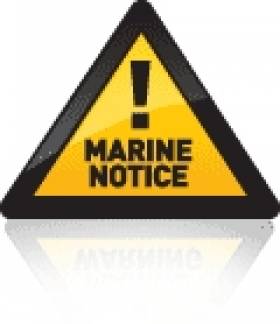Displaying items by tag: Marine Notice
#MarineNotice - The latest Marine Notice from the Department of Transport, Tourism and Sport (DTTAS) advises that the International Maritime Organisation (IMO) General Assembly, at its recently concluded 28th session, adopted Resolution A. 1078(28) which revokes Resolution A. 600(15) to extend application of the voluntary IMO Ship Identification Number Scheme to fishing vessels of 100 gross tons and above.
The IMO Ship Identification Number Scheme was introduced in 1987 through adoption of Resolution A. 600(15), as a measure to prevent maritime fraud and enhance safety and security. The IMO number is used throughout the maritime industry as the first point of reference in identifying a ship.
Resolution A. 1078(28) will benefit oversight of the International Convention on Standards of Training, Certification, and Watchkeeping for Fishing Vessel Personnel, which sets the certification and minimum training requirements for crews of seagoing fishing vessels.
It will further aid implementation of the international treaty on fishing vessel safety, known as the Cape Town Agreement, once it enters into force.
Additionally, the proposed amendment will broadly facilitate improved management of fisheries-related maritime activities by other United Nations agencies and national governments.
IHS Maritime, formerly known as IHS-Fairplay (IHS-F), is the originating source for IMO numbers and is responsible for assigning and validating them.
The IMO request that owners and builders of existing and new fishing vessels of 100 GT or more obtain an IMO number, free of charge, at www.imonumbers.ihs.com. Alternatively requests can be sent to IHS Maritime by post.
Contact details and more information about the new resolution are included in Marine Notice No 37 of 2014, a PDF of which is available to read or download HERE.
Marine Notice: 3D Seismic Survey In South Porcupine Basin
#MarineNotice - The latest Marine Notice from the Department of Transport, Tourism and Sport (DTTAS) advises that Polarcus DMCC is scheduled to carry out a 3D Seismic survey in the South Porcupine Basin off the southwest coast of Ireland.
The survey, similar to the 2D survey in the Porcupine Basin that continues till October, will cover 7,270 km2 and is anticipated to commence in early July with an expected duration of 121 days, subject to weather.
Co-ordinates for the proposed seismic 3D survey are included in Marine Notice No 36 of 2014, a PDF of which is available to read or download HERE.
The seismic vessel M/V Polarcus Amani (Call sign C6ZD3) is scheduled to carry out the work. The vessel will be towing an array of 10 cables, each 8.1km long, with 150m separation for a total width of 1,350m, at a depth of 14 metres.
A buoy equipped with a radar reflector and navigation strobe light will be deployed at the end of each cable.
The seismic vessel will be accompanied by support vessel M/V Bravo Sapphire (Call sign ZDJY8) and chase vessels M/V Nomad (Call sign EI5298) and M/V Ocean Guardian (Call sign EIVX). All vessels will be listening on VHF Channel 16 & 67.
The seismic vessel will be restricted in its ability to manoeuvre while carrying out the survey. All vessels, particularly those engaged in fishing, are requested to give the M/V Polarcus Amani, her towed equipment, the M/V Bravo Sapphire, the M/V Nomad and M/V Ocean Guardian a wide berth and keep a sharp lookout in the relevant areas.
Marine Notice: Two-Day Geophysical Survey In Killala Bay
#MarineNotice - EGS International Ltd is scheduled today (13 June) to begin a two-day geophysical cable route survey involving multibeam echo-sounder bathymetry, side-scan sonar, magnetometer and sub-bottom profiling off the Irish coast at Killala Bay.
The survey follows from a longer exercise carried out in January this year, and will be focused inshore along a route into Killala Bay detailed by co-ordinates listed in Marine Notice No 34 of 2014, a PDF of which is available to read or download HERE.
The vessel SMS Coastal Cat (call sign EIJD6) is scheduled to carry out the work on a 12-hour operation basis and will display appropriate shapes during daylight operations and lights during night time operations and periods of reduced visibility.
This vessel will be towing survey equipment up to 200m astern and will be restricted in its ability to manoeuvre while carrying out the survey.
As such, all vessels in the area, particularly those engaged in fishing, are requested to give the SMS Coastal Cat and its towed equipment a wide berth and keep a sharp lookout in the relevant areas.
Marine Notice: Doolin Pier Development
#MarineNotice - The latest Marine Notice from the Department of Transport, Tourism and Sport (DTTAS) advises that works are being advanced by L&M Keating Ltd on the new harbour development at Doolin, Co Clare.
The location of the works – comprising a new pier, revetment, bed rock dredging, access road and associated works – is at Latitude 53° 00’.54 N and Longitude 009° 24’.23 W.
Construction commenced last month and the works are expected to take in the region of 18 months to complete.
Drilling and blasting works were scheduled to be carried out this week, and for health and safety reasons an Exclusion Zone has been set up and is being and monitored.
Mariners are requested to proceed slowly and with caution in the vicinity and to give the works a wide berth.
All vessels in this area should proceed with extreme caution, reduce speed to a minimum and keep a close look out for obstructions in the vicinity of the works.
The site working area will be marked with blue buoys. Wave-wash from vessels should be avoided. A diagram of the works area is included in Marine Notice No 33 of 2014, a PDF of which is available to read or download HERE.
#MarineNotice - Following from this weekend's survey in Donegal Bay, INFOMAR will undertake a hydrographic and geophysical survey off the West Coast in the Galway Bay area between 25 May and 7 June 2014.
The RV Celtic Voyager (Call sign EIQN) is expected to carry out the survey operations, which follow up on a previous survey completed in February.
The vessel will be towing a magnetometer sensor with a single cable of up to 100m in length.
She will also be displaying appropriate lights and markers, and will be listening on VHF Channel 16 throughout the project.
Details of the survey area are included in Marine Notice No 32 of 2014, a PDF of which is available to read or download HERE.
Marine Notice: New Hydrographic Survey In Donegal Bay
#MarineNotice - INFOMAR will undertake a hydrographic and geophysical survey in Donegal Bay next weekend 24-25 May.
The RV Celtic Voyager (Call sign EIQN) is expected to carry out the survey operations, which follow up on a previous survey completed last month.
Though the vessel will not be towing any instruments during this survey, she will have limited limited manoeuvrability due to survey line constraints.
The vessel will display appropriate lights and markers, and will be listening on VHF Channel 16 throughout the project.
Details of the survey area are included in Marine Notice No 31 of 2014, a PDF of which is available to read or download HERE.
Marine Notice: Vessel Wash Danger For Rowing Craft
#MarineNotice - The latest Marine Notice from Waterways Ireland advises masters and owners of vessels of the inherent dangers posed by the wash of larger vessels on craft such as rowing craft and small open boats.
The very low freeboard, particularly of rowing craft, makes them susceptible to being swamped and capsized by a large wash.
Masters should be on the look-out for such vessel when navigating and reduce their vessel's wash well in advance of passing these craft and be mindful of any requests from safety boats accompanying rowers.
Marine Notice: Marine Meteorological Monitoring Survey 2014
#MarineNotice - Marine Notice No 29 of 2014 calls on all ship managers, shipmasters, sailors, operators of fixed platforms and operators of non-SOLAS vessels to participate in the 2014 Marine Meteorological Monitoring Survey, which is available HERE.
The World Meteorological Organization (WMO) conducts the Marine Meteorological Monitoring Survey (MMMS) on a regular basis.
This is a tool to improve the level of meteorological support co-ordinated by the Joint WMO-IOC Technical Commission for Oceanography and Marine Meteorology (JCOMM), providing invaluable information to understand and reflect the needs and requirements of all marine communities in order to improve Marine Meteorological Information Services, as part of the Global Maritime Distress and Safety System (GMDSS).
The survey will continue until 30 June 2014. Any questions or enquiries should be made directly to the WMO Marine Meteorology and Oceanography Programme by email to [email protected] and not to the Department of Transport, Tourism and Sport.
Marine Notice: 2D Seismic Survey In Ireland's Atlantic Waters
#MarineNotice - The latest Marine Notice from the Department of Transport, Tourism and Sport (DTTAS) advises on proposals to complete the 2D seismic survey programme in the Atlantic waters of the Irish Designated Continental Shelf.
The planned start of the survey is mid-April 2014 and, weather permitting, will continue until mid-October 2014.
The programme will commence in the Porcupine Basin till early June and then progress to the Rockall Basin area.
The seismic acquisition will be carried out by the seismic vessel MV BGP Explorer (Call sign HP4919) and will be accompanied by guard/supply vessels MV Neptune 10 (Call sign ZDJQ8) and MV Neptune Mariner (Call sign ZDIW8).
The 2014 programme is proposed to complete the remaining 8,000km survey. The survey vessel BGP Explorer will tow a single solid 10km streamer and will travel at 4-5 knots with the streamer located approximately 10 metres below the water surface.
All vessels will be listening on VHF Channel 16 throughout the project.
All vessels, particularly those engaged in fishing, are requested to give the BGP Explorer, Neptune 10 and Neptune Mariner a wide berth and keep a sharp lookout in the relevant areas.
Details of the relevant survey area are included in Marine Notice No 28 of 2014, a PDF of which is available to read or download HERE.
Marine Notice: Dredging & Disposal Works At Wicklow Harbour
#MarineNotice - The Department of Transport, Tourism and Sport (DTTAS) has been advised that dredging and disposal works will commence in Wicklow Harbour (52° 58.9’N, 006° 02.1’W) on Thursday 10 April 2014 and will continue for a period of approximately 10 weeks.
The work will include dredging of the harbour and disposal of the dredged material at a designated dumping site.
The disposal site will be positioned 1.5km north-east of the harbour’s east pier, and the disposing of the material will be carried out by the vessel Jenny T (Call sign EIMY6).
All vessels in this area should proceed with extreme caution, reduce speed to a minimum and keep a close lookout for obstructions in the vicinity of the works.


























